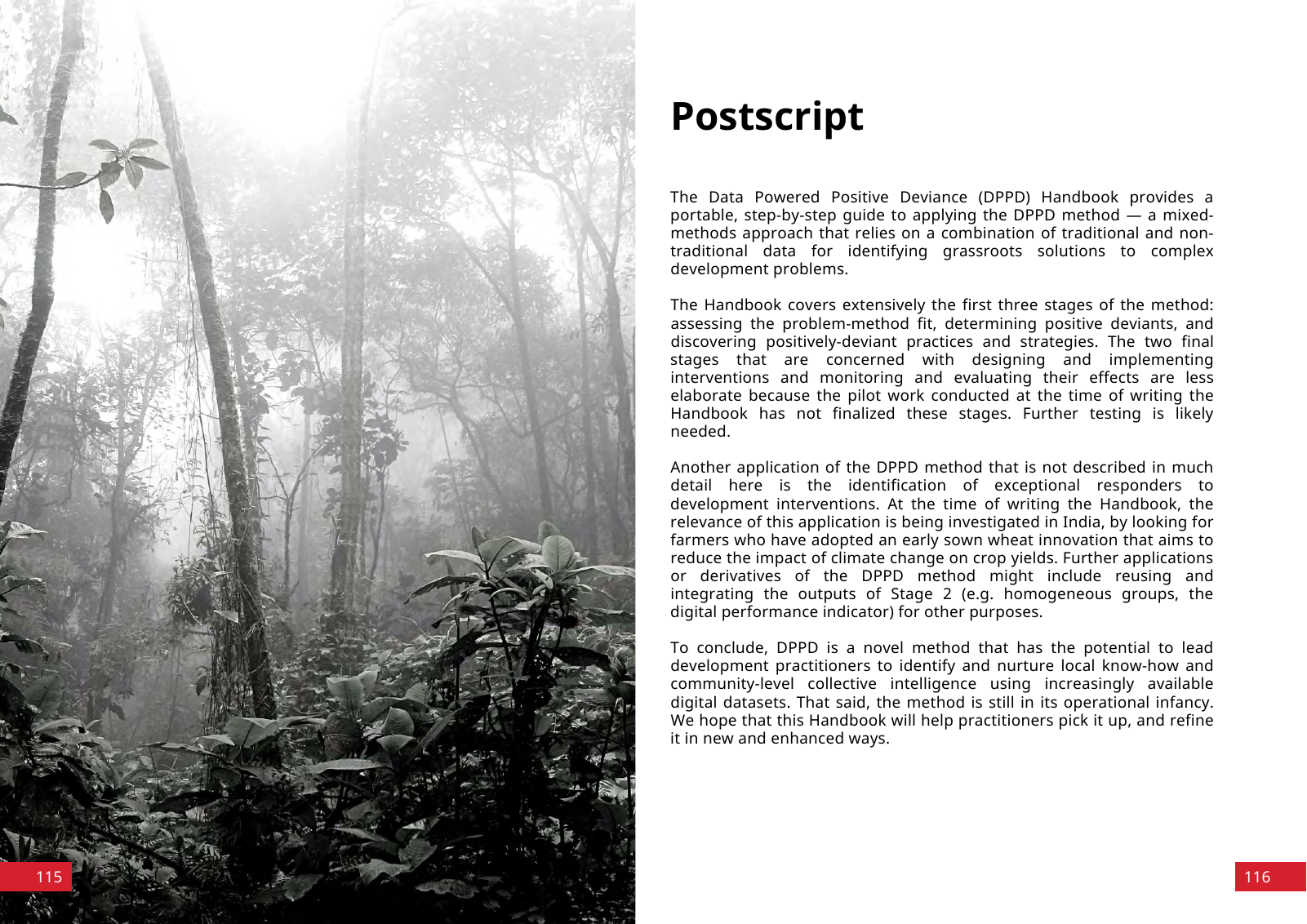The Data Powered Positive Deviance DPPD Handbook provides a portable step by step guide to applying the DPPD method a mixed methods approach that relies on a combination of traditional and non traditional data for identifying grassroots solutions to complex development problems The Handbook covers extensively the first three stages of the method assessing the problem method fit determining positive deviants and discovering positively deviant practices and strategies The two final stages that are concerned with designing and implementing interventions and monitoring and evaluating their effects are less elaborate because the pilot work conducted at the time of writing the Handbook has not finalized these stages Further testing is likely needed Another application of the DPPD method that is not described in much detail here is the identification of exceptional responders to development interventions At the time of writing the Handbook the relevance of this application is being investigated in India by looking for farmers who have adopted an early sown wheat innovation that aims to reduce the impact of climate change on crop yields Further applications or derivatives of the DPPD method might include reusing and integrating the outputs of Stage 2 e g homogeneous groups the digital performance indicator for other purposes To conclude DPPD is a novel method that has the potential to lead development practitioners to identify and nurture local know how and community level collective intelligence using increasingly available digital datasets That said the method is still in its operational infancy We hope that this Handbook will help practitioners pick it up and refine it in new and enhanced ways Postscript 115 116

Hinweis: Dies ist eine maschinenlesbare No-Flash Ansicht.
Klicken Sie hier um zur Online-Version zu gelangen.
Klicken Sie hier um zur Online-Version zu gelangen.